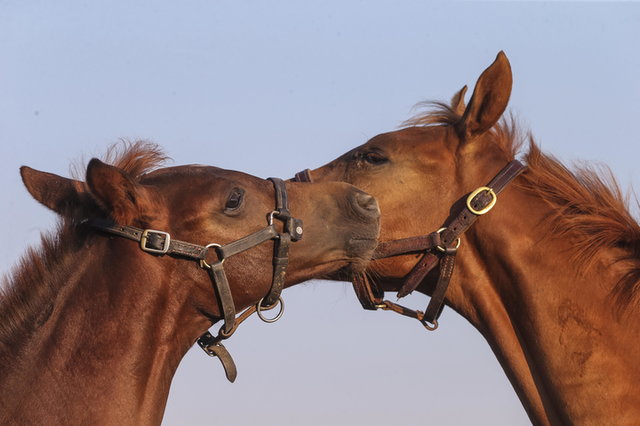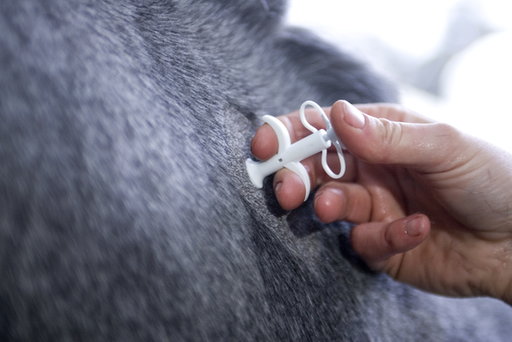
Week 5

Social development
For your foal's social development, it is important for it to grow up among foals of its own age and other horses, so that it learns social skills and can discover how to behave in an ‘equine’ manner. Horse language involves being able to read a nose, eye, ear, and positioning of the head and neck or tail.
For your foal's physical development too, it is highly important for it to have a playmate. Foals encourage each other by running. Exercise is particularly excellent for the development of its joints.
If it is not feasible to have your foal share a field with another foal, then not to worry. Apparently, foals often very happily play with mares and learn horse language equally well from them.

Week 6
Interesting Fact!
After birth, a foal will drink 50 to 60 times per day. When it is 6 weeks old, it will only drink fifteen to twenty times.
Microchipping and Sketching
A foal may be microchipped from the age of six weeks old. In any case, it must be identified before it is six months old. Beyond this, it will still be possible to have it identified but it will receive a passport with restrictions. Do not wean your foal until after it has been microchipped and sketched by a passport consultant. If the foal has been weaned, its identity will need to be established by testing both parents' DNA.
Check out the website of your own studbook for the microchipping requirements for your foal.

Week 7

Eat grass
When a foal is two weeks old, it will start to nibble on grass. By the time it is six weeks old, it will graze about a quarter to a third of the time compared with its mum.
Week 8

Exploring
When a foal comes across anything new, it will sniff it first. Then it will lick it, suckle on it and bite it. People sometimes get a freight when a foal tries to suckle their fingers. Do not tell a young foal off straight away. It does not do it consciously and is just exploring. The first time you can still allow this behaviour but after that you will need to consistently tell it not to do so. If not, the foal will continue to do so, even into adulthood, when biting is no longer ‘cute’!
Week 9

Approach on both sides
American research has shown that it is really positive for foals to be touched from a young age. Apparently, two to three years later in a field, horses who were stroked and approached on the left side of their body as a foal turned out to be a lot easier to stroke/train on their left side. The same applied to foals who were only approached/touched on their right side. So there are definitely advantages to be had from approaching and touching a foal from both sides during the period after its birth. It will not ‘forget’ this during its years of being reared.

